So many contradictions, so little time.
A love of spare, austere, sculptural plantings. Yet every summer I still invite the circus to camp in my garden.
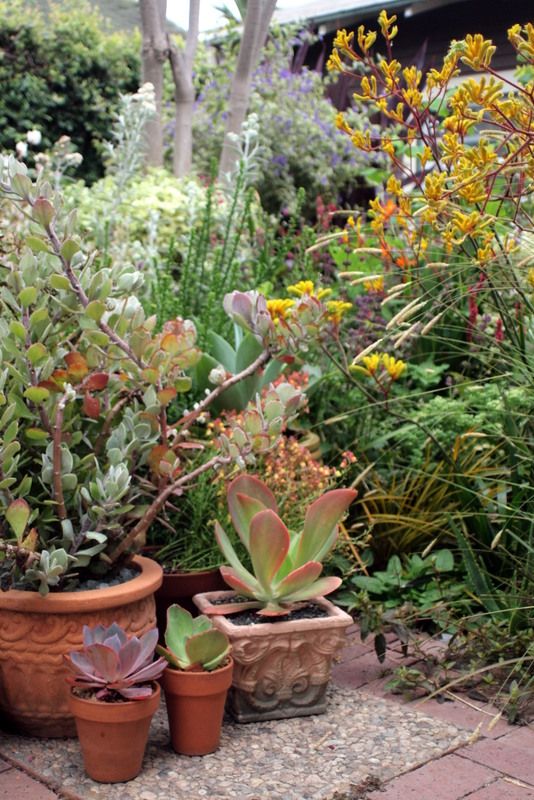
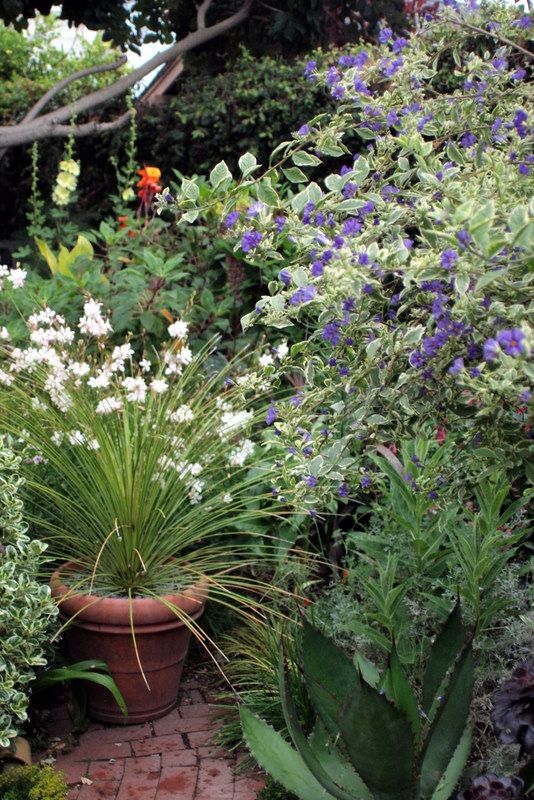
So many contradictions, so little time.
A love of spare, austere, sculptural plantings. Yet every summer I still invite the circus to camp in my garden.


I missed yesterday’s Bloom Day post, hosted by May Dreams Gardens, but now need a photo for Digging’s Foliage Follow-Up, always held the day after Bloom Day.
Let’s see….blooms and great leaves. Oh, of course.
Cannas can do double-duty for both occasions.
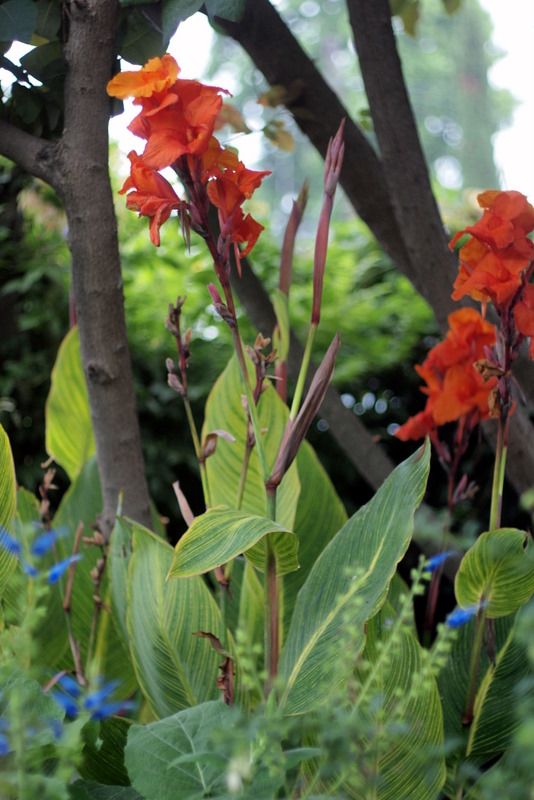
Looking forward to Bloom Day and Foliage Follow-Up reading this weekend. Still drizzly and overcast here in Southern California, a mile from the ocean.
Yes, I’m being ironic, since I hadn’t anticipated lavish tableware displays from the outdoor-themed “The Art of Entertaining,” a one-day event held June 15, 2011, at South Coast Plaza in Costa Mesa, California. Work had me on the freeways, so I stopped by to check out what I thought might be cutting-edge ideas for basically moving indoor activities outdoors for summer. I obviously didn’t read the fine print. It was mostly about luxe table settings by Hermes, Villeroy & Boch, Lalique, Baccarat.
Brings a whole new level of meaning to “conspicuous consumption.”
The Hermes display. Looks like their ‘Siesta’ line, but I didn’t verify.
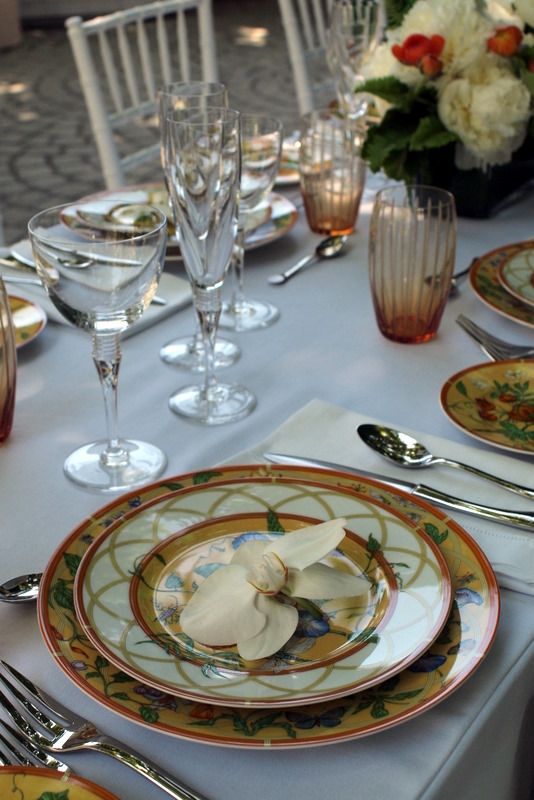
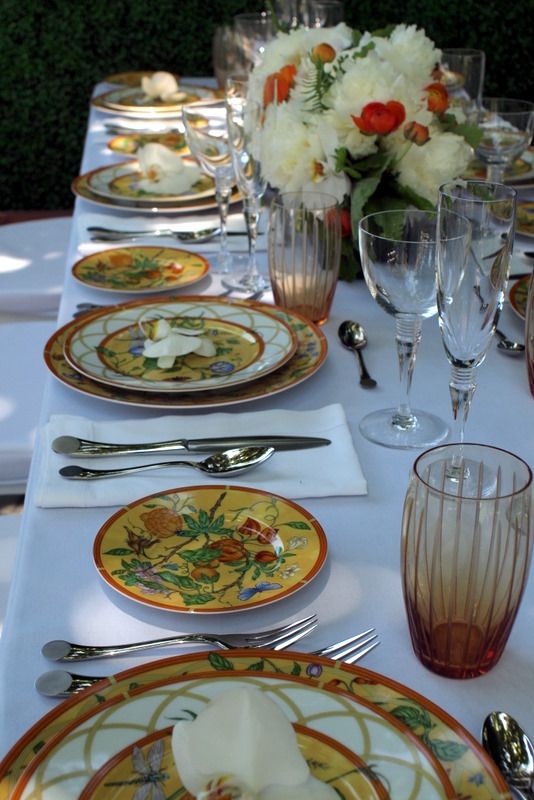
Villeroy & Boch’s ‘New Wave’ table settings with tree peonies and herbs
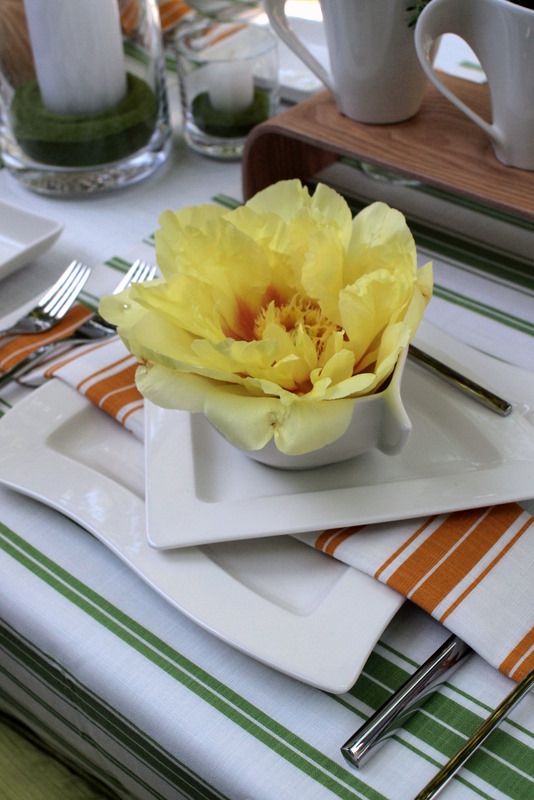

Lalique
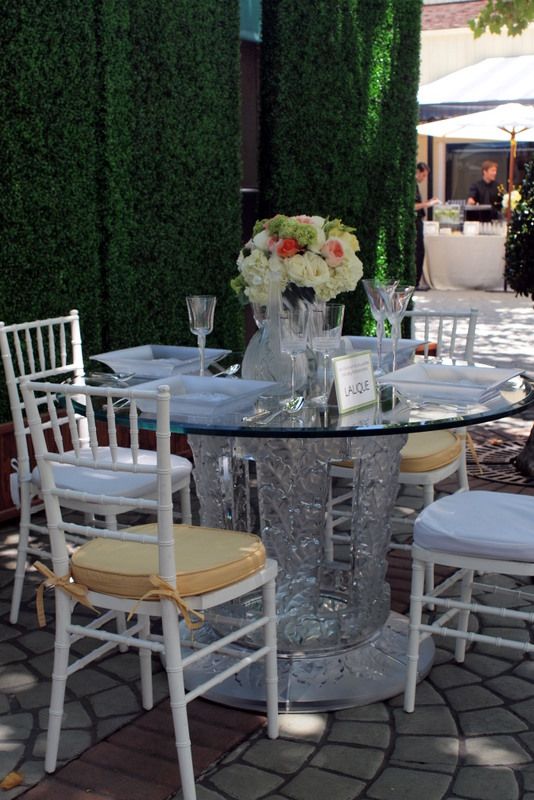

Baccarat
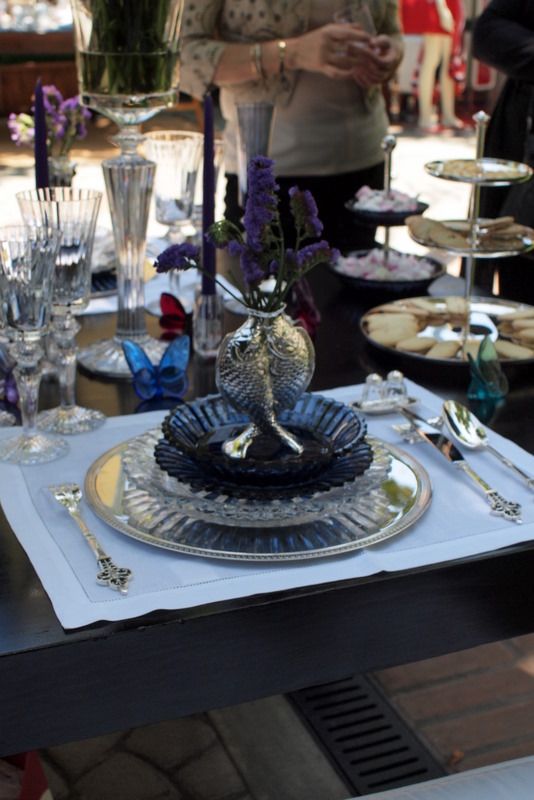

Crate & Barrel and Restoration Hardware, like a page ripped from their catalogues

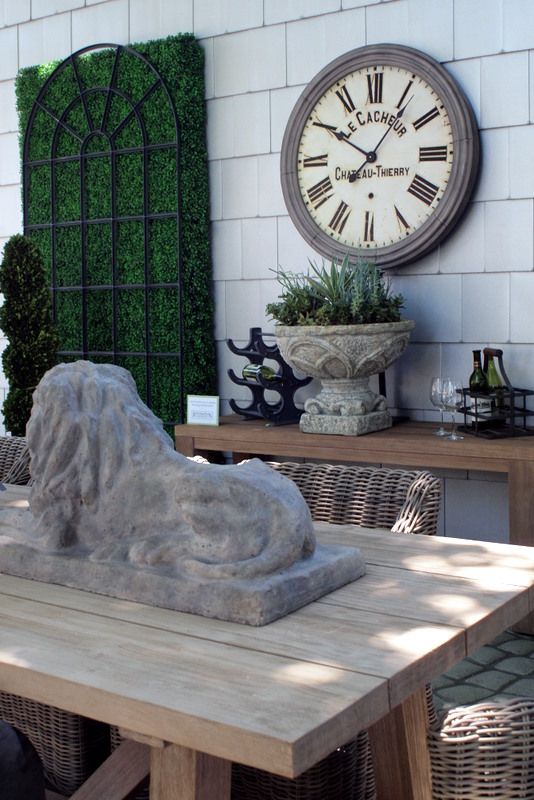
I did find some interesting things at the display by Emmo, like this grill that can double as a table and a small table-top grill on a shadow-inducing side table.
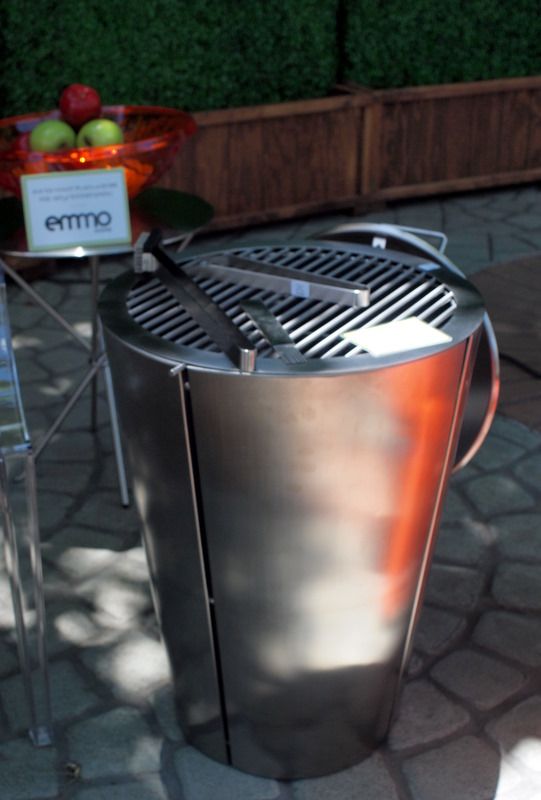
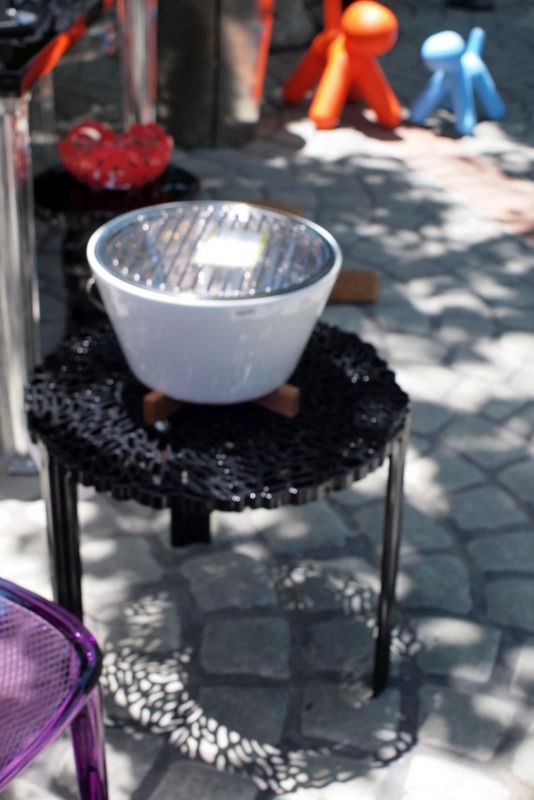
Metal cut-out bowls and squishy vases. Polycarbonate chairs, indoor or outdoor (but what about the sweatiness factor outdoors?)
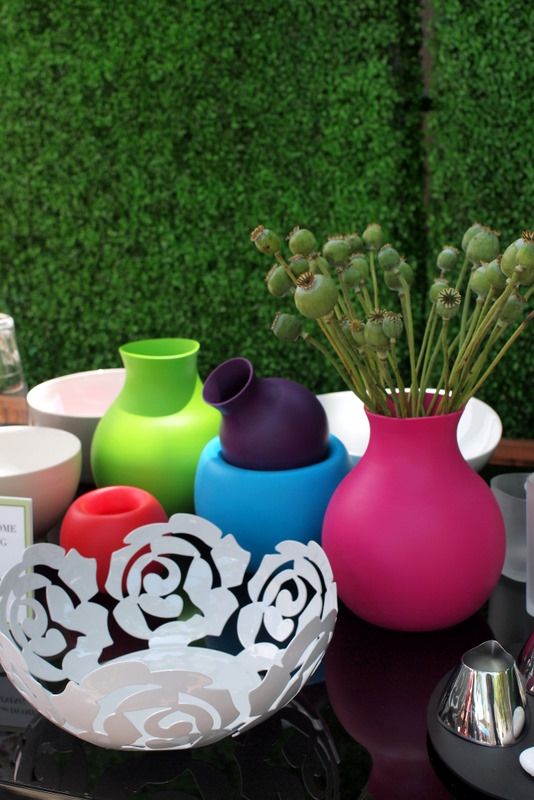
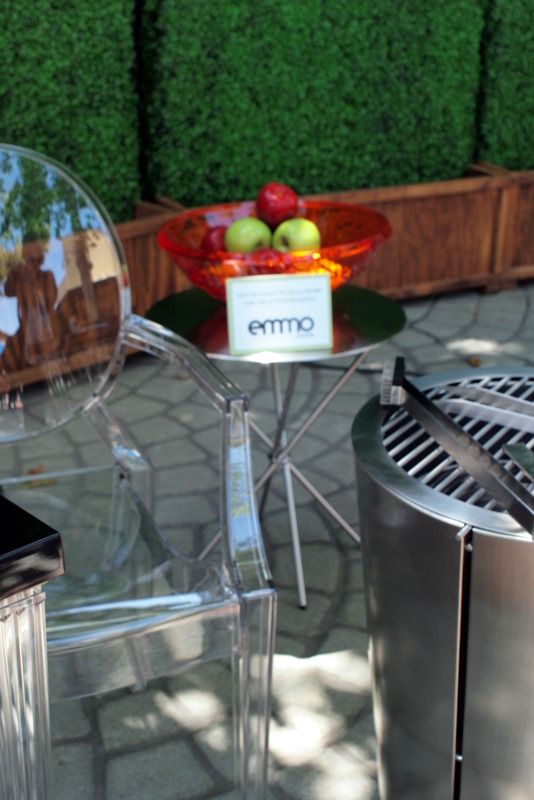
And from Emmo’s website, a swing whose seat has plantable pockets for vines to creep up.

Composite flowers of senecio come paired with an incredible range of leaf forms.
A few portraits from one of the largest genera of flowering plants, taken at recent plant shows
Senecio fulgens with an Emilia javanica-like flower
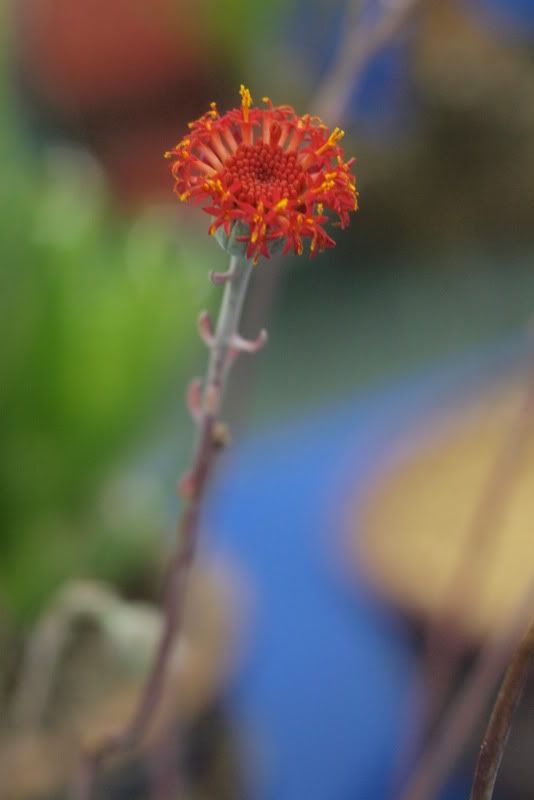
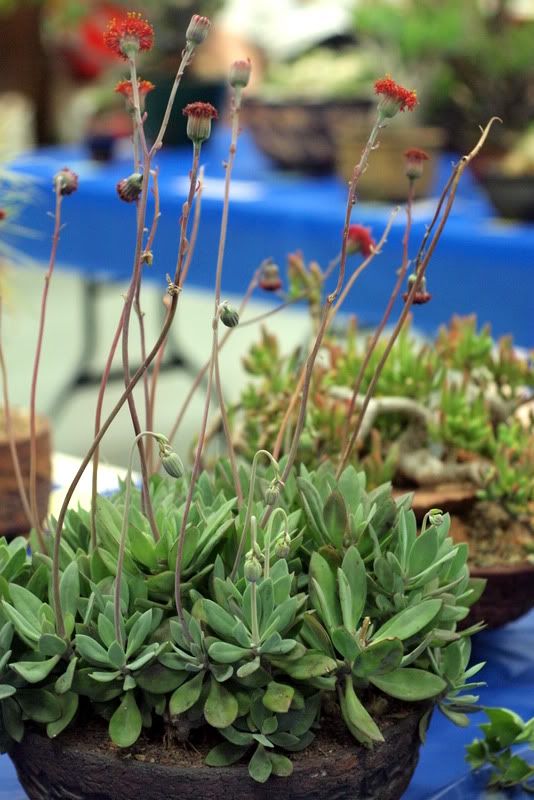
Senecio tropaeolifolius
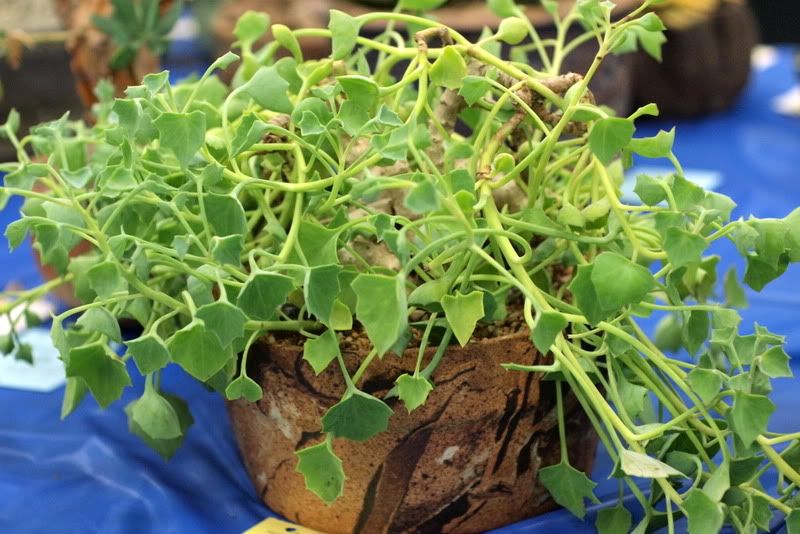
Senecio jacobsenii

The nice man who I gave all my cash to, talking about a miniature agave from Japan he called ‘Shoji.’
(Unlike many of the Japanese A. potatorum hybrids, this one supposedly grows not much bigger than a poker chip.)
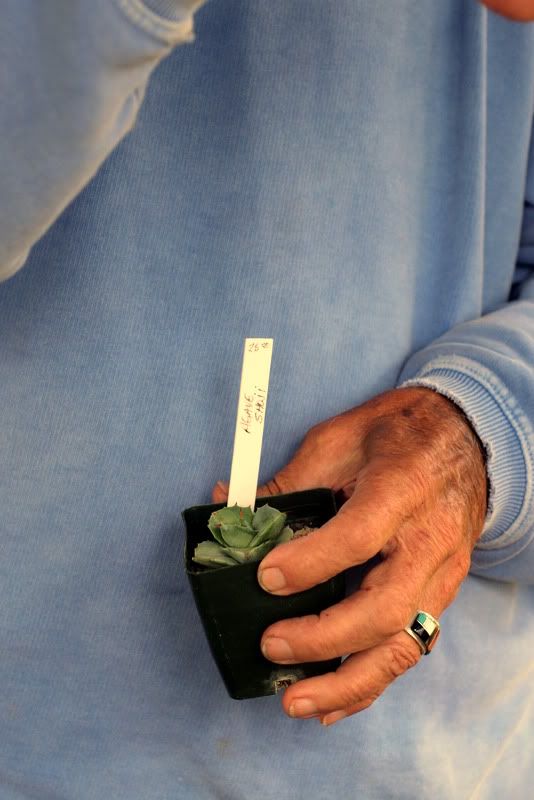

Cleaned out, and I hadn’t been at the show five minutes. His was the first table I stopped by at the Los Angeles Cactus and Succulent Society Plant Show and Sale held this Sunday, June 12, lured in by his variegated sport of Kalanchoe beharensis and this Aeonium smithii.
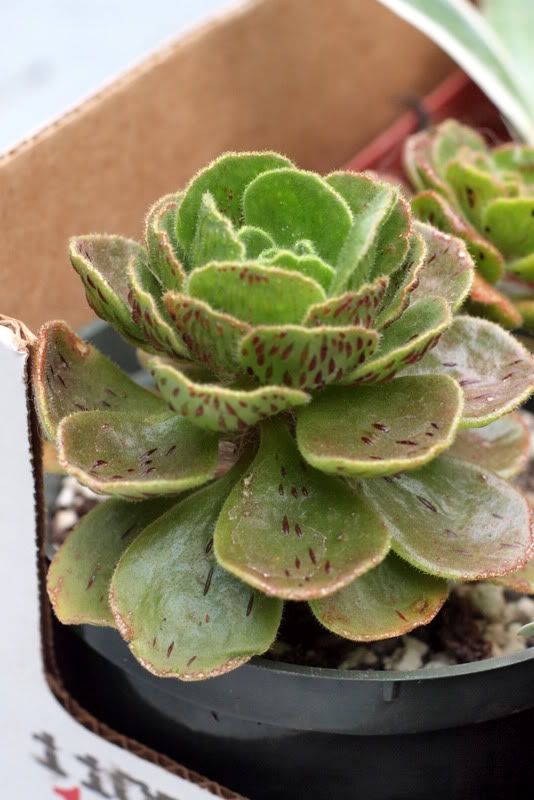
I couldn’t leave Kalanchoe synsepala on his table either.
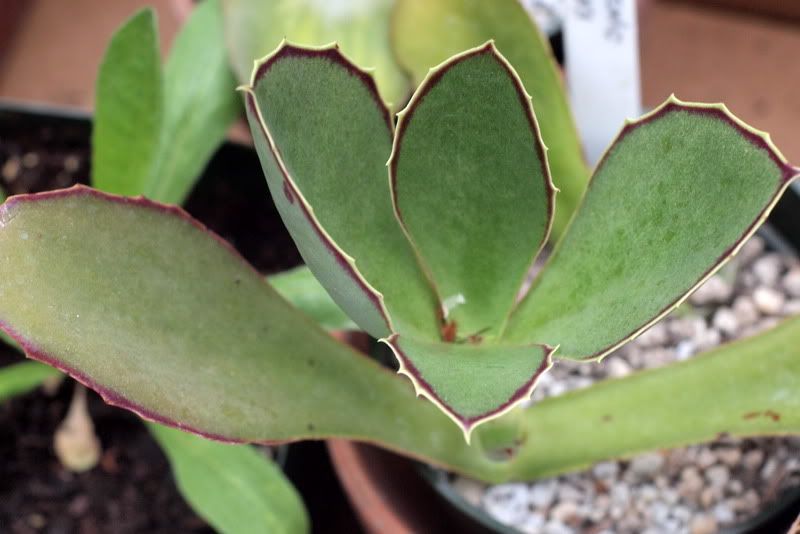
Like Vegas, you have to develop a plan to stretch whatever resources you came with for the duration. But I don’t see how this is possible at plant shows.
There’s just too many fascinating, smooth-talking characters with backyard hybridization stories to part you from your money, like a John Laroche behind every plant sale table, right out of Susan Orlean’s The Orchid Thief. And by that reference, I’m not implying any chicanery, just lifelong, obsessional love for plants.
I was later tempted by a small $7 Agave ‘Creme Brulee,’ but did no further shopping and just basked in the show atmosphere.
Unnamed bromeliad hybrids in bloom.
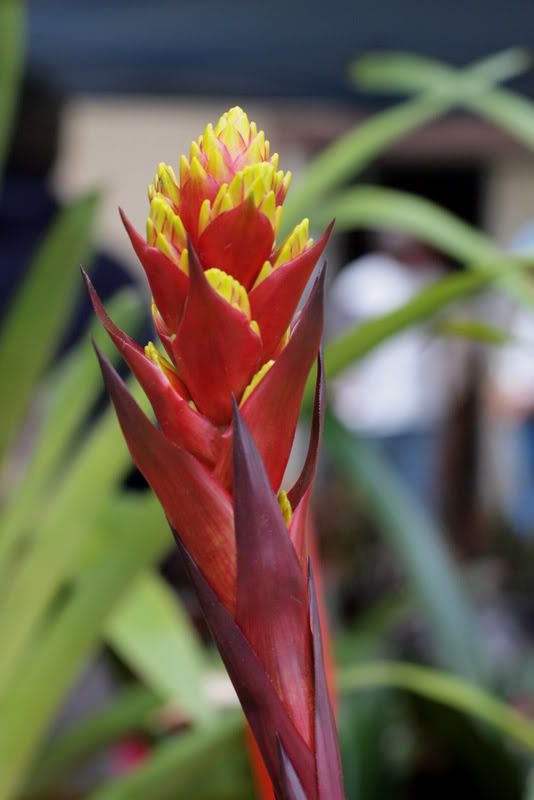

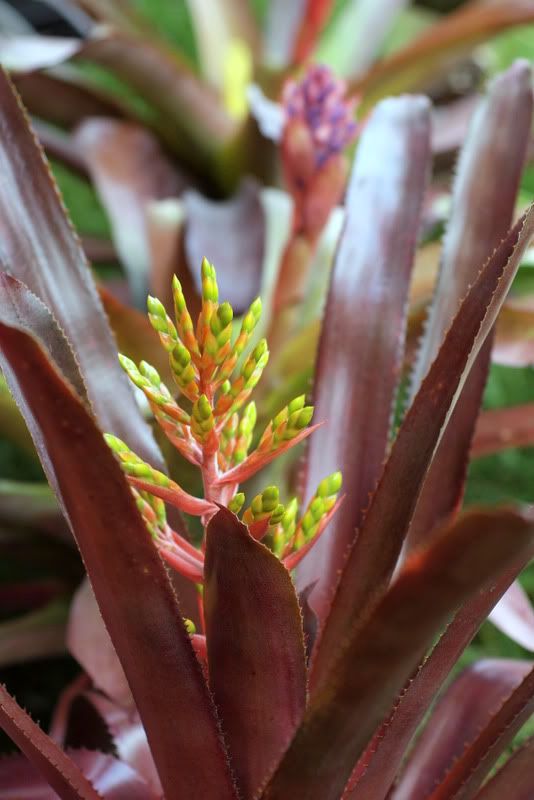
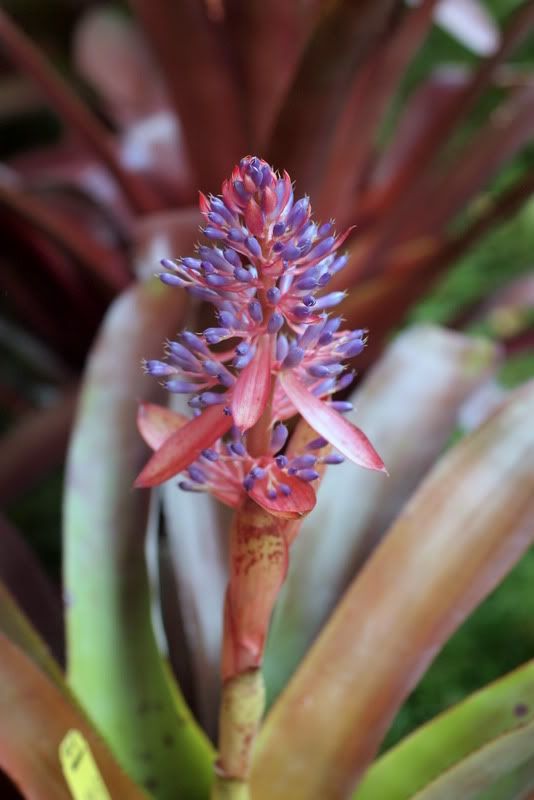
Though I did harass at least three people to find the correct name of this bromeliad, which was mislabeled on the show table. None were for sale.
It was difficult to get a clear photo without moving other show plants. And at a plant show, you do not touch the plants.
Billbergia sanderiana is officially on the Future Plant Purchases list.
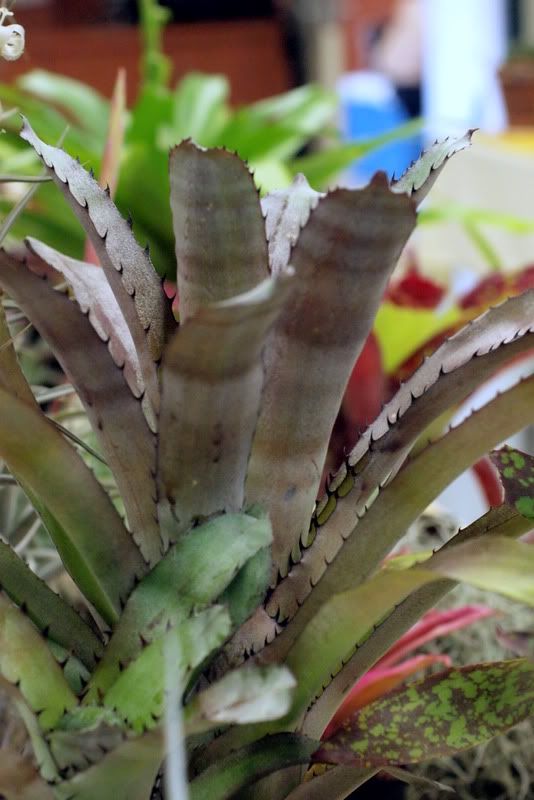
And since I was up in the Valley anyway for the show, I checked out the succulent and cactus nursery California Nursery Specialists a few minutes away in Reseda. They are commercial growers open to the public on Saturday and Sunday. The experience was a bit overwhelming, to say the least.
Endless vistas of Echeveria subrigida
Narrow walkways, hanging pots overhead. Dark red leaves are Crassula marginalis with string of pearls, Senecio rowleyanus.
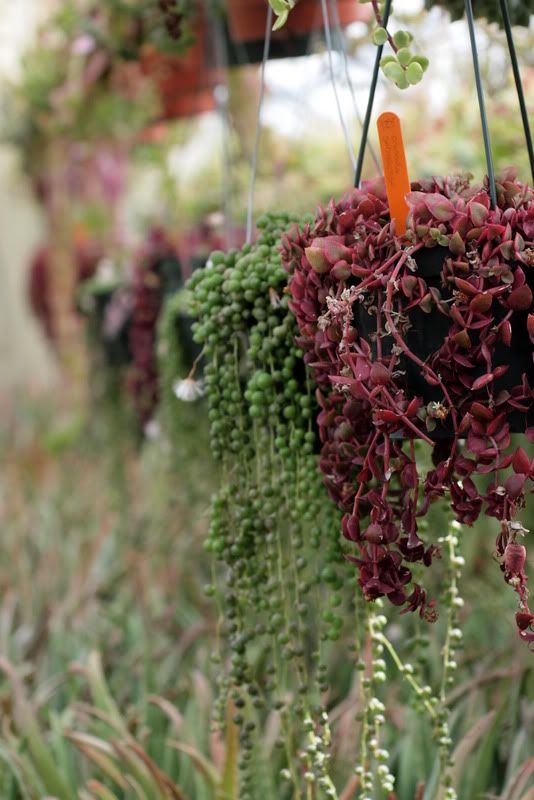
And nursery houses after nursery house, each suffocatingly hot, although outside temps were mild, in the 70’s.
The heat, the shapes, the colors. (There was a table loaded with the ‘Pink Butterflies’ kalanchoe I blogged about yesterday.)
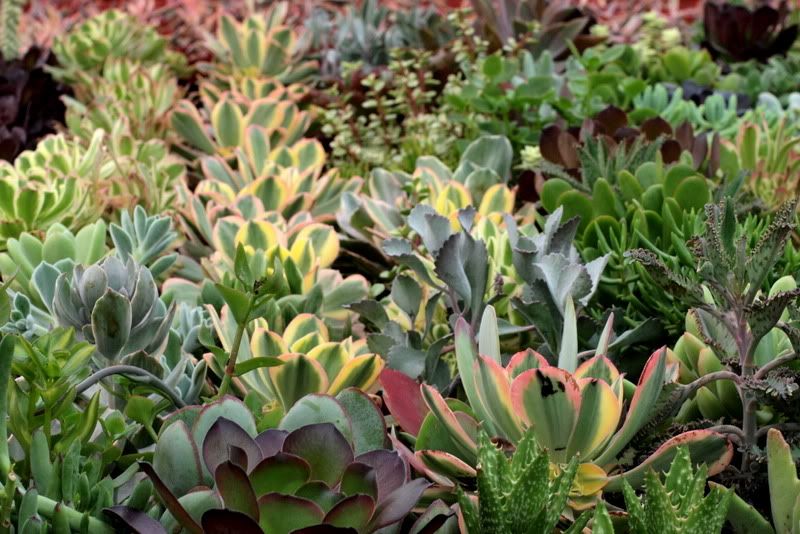
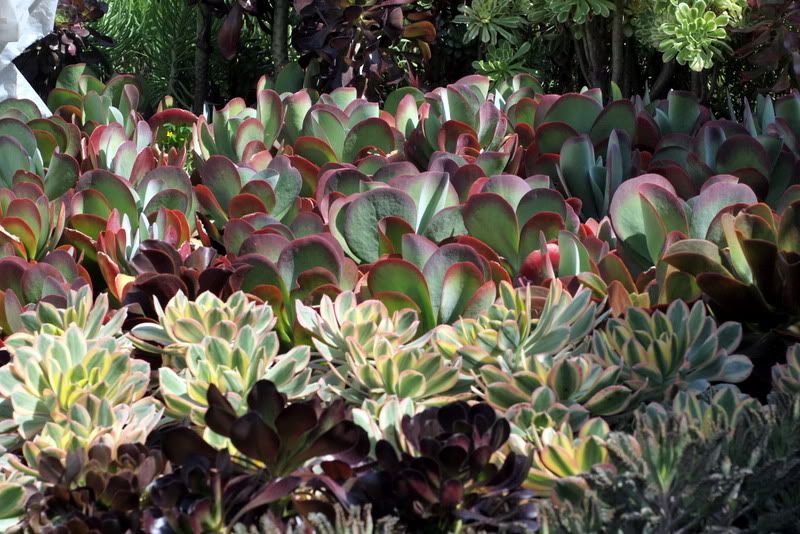
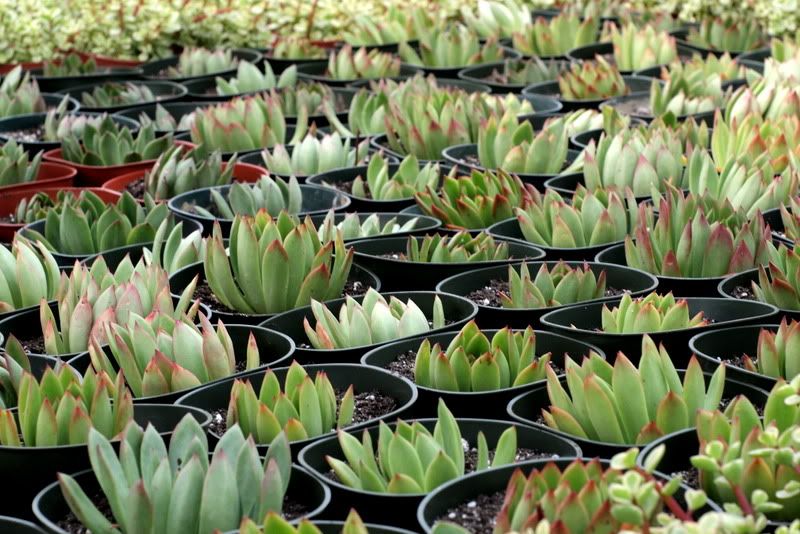
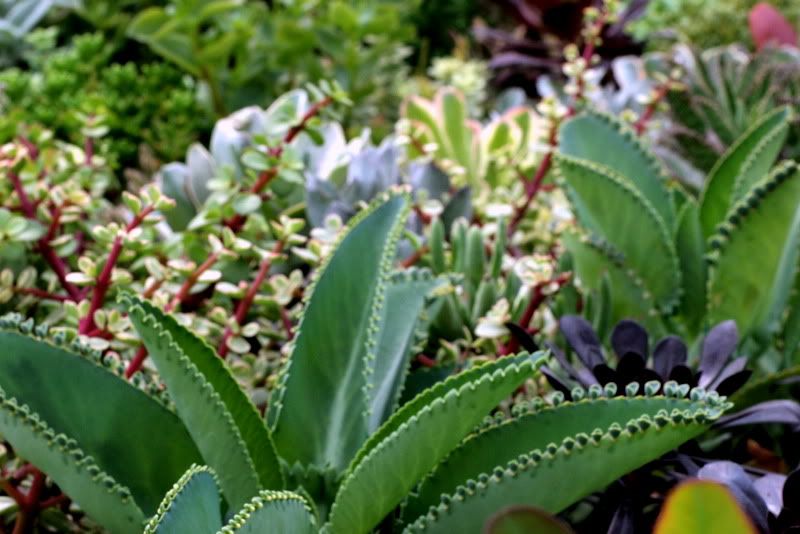
I bought a couple Echeveria ‘Metallica’ and a small Agave angustifolia ‘Marginata.’ Reasonable prices, overwhelming selection.
The entire name wouldn’t even fit in the post title: Kalanchoe delagoensis x daigremontiana ‘Pink Butterflies.’
How fitting that a hybrid with a parent commonly known as ‘Mother of Thousands’ would have a name involving syllables of thousands.
I’ve had this succulent packed amongst other pots on a tall plant stand, a snail-free zone, and thought its recent growth and coloring merited a more prominent place in the revolving summer containers display. The leaves look stitched together by hand, don’t they?
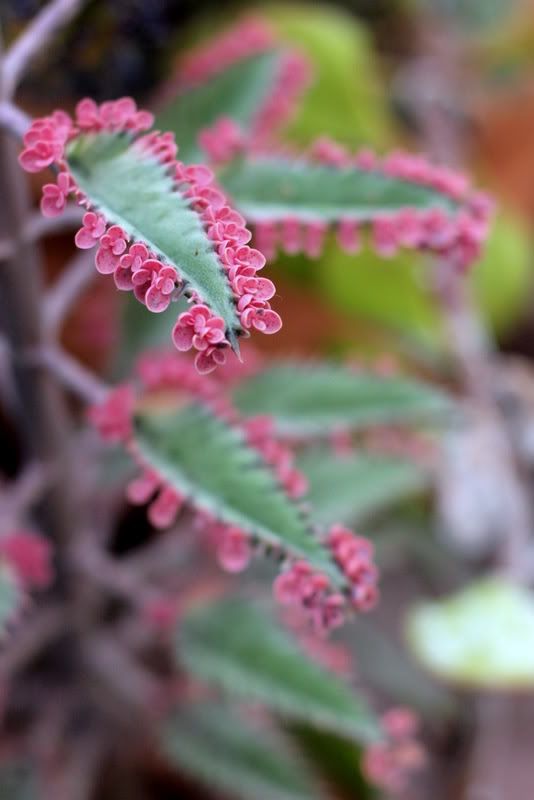
Many years ago I brought home one of the parents, Kalanchoe daigremontiana, from a nursery, delighted with its bizarre intricacies of leaf. I admit the nursery owner even warned me: “You do know its common name is Mother of Thousands, right?”
So I get lots of extra plants. Win/win!
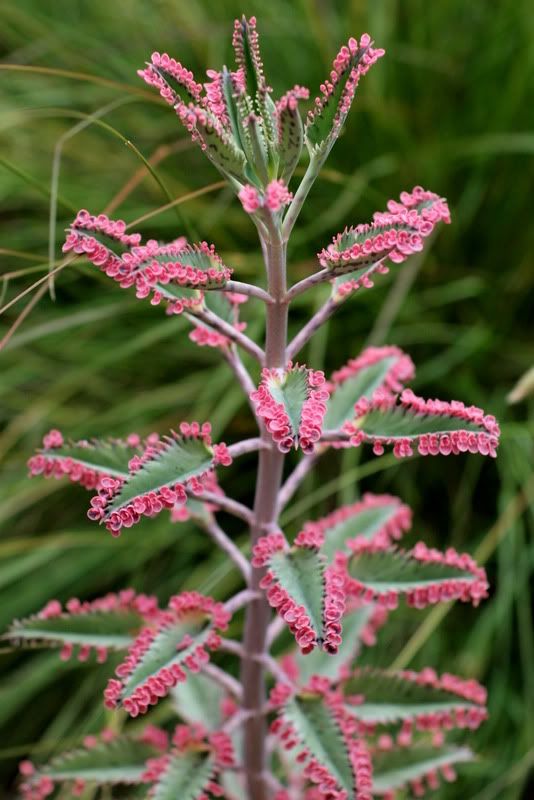
I ditched that K. daigremontiana in short order, though still deal with its descendants. But this new hybrid was so fabulous it was worth the risk of living in an understory of ‘Pink Butterflies.’
Yet the gods of hybridizing have smiled upon us with this bespoke, seemingly custom-made succulent. ‘Pink Butterflies’ has lost the ability to rain down its progeny on our gardens and will have to be propagated via cuttings. From Succulent Gardening; The Art of Nature:
“‘Pink Butterflies’ still produces copious quantities of tiny pink butterfly-like plantlets on its leaves but something in the mutation to a variegate form has taken away the ability for them to root. Sometimes a couple might take, but in general, no. It can still be propagated from cuttings just fine.”
So this hybrid seems to have thwarted the Go Forth And Multiply impulses of its parent plants. ‘Pink Butterflies’ is a variegated sport of a hybrid known as ‘Houghton’s Hybrid.’ I’ve been searching for information on the intriguing Mr. A.D. Houghton, but could find little online other than he lived and worked in San Fernando, California and was probably deceased by 1940. My Hortus III confirmed this date with a single entry: Arthur Duvernoix Houghton 1870-1938. His full name brought up a few more online entries, including a reference to his monograph on begonias and his book The Cactus Book, copy currently unavailable. Another title to watch out for at thrift shops and flea markets.

Look away briefly, and June overwhelms winter’s carefully laid plans.
Since spring in Southern California really gets going in March, by June plant growth is at full throttle.
The agaves, succulents, and Mediterranean evergreen shrubs have presented a sedate, enchanting picture all winter and spring.
By spring, I’m ready for a riot, for a zero-to-60 surge in vegetation that constantly teeters on tipping into chaos. I’m ready for summer, in whatever surprising form it will take. This year the mid-border perovskias I planned to enjoy late summer have been swallowed whole by June. I should have pulled out the burgeoning self-sown quaking grass Briza maxima to make way for the perovskia, but enjoyed the grasses’ dangling lockets far too long. Two eyrngium have disappeared under a huge gaura’s skirts, but I count this year a success, since one E. planum has managed to flower and may now hopefully reseed.
What looks like ample space in February is no match for June’s sharp elbows.
Alarmed? Not really. This is where it gets exciting. The gauras last year barely stirred into life.
The perovskias are struggling somewhere amongst the haloragis and quaking grass, meant to rise up with the Persicaria amplexicaule.
Sure, many of these plants are easy thugs in areas with summer rain. I’m just grateful for the lush drama they bring to my summer-dry garden.

The Amicia zygomeris planted last fall has been a mesmerizing presence that I’ve allowed to grow as large as it pleases.
Permissiveness the first year in the garden, discipline the next.
In a small garden, something’s gotta give, and this year it’s the crocosmia getting squeezed by the amicia.
Crocosmia is tough enough to take it and will be back in force next year.
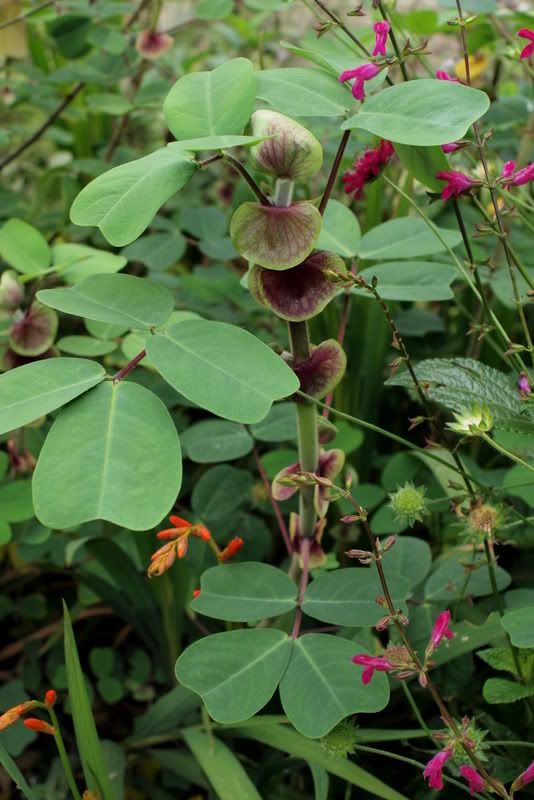
I’m keeping a careful eye on this Lobelia tupa, moved last fall to this roomier spot.
Nothing is allowed to encroach on this lobelia, not even Salvia ‘Wendy’s Wish.’
(The California poppies are long-lasting in this year’s coolish spring/early summer.)
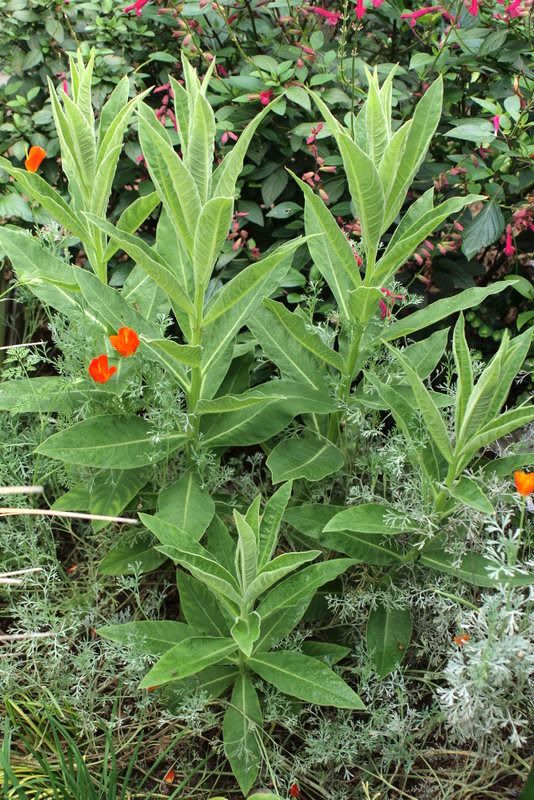
I’d never subject anything really special to the border melee in June. That’s what containers are for.
But the pots lining the border do see a fair amount of action. Gaura lindheimeri leans into a potted sotol. Geum magellanicum gets support from potted Agave titanota*.
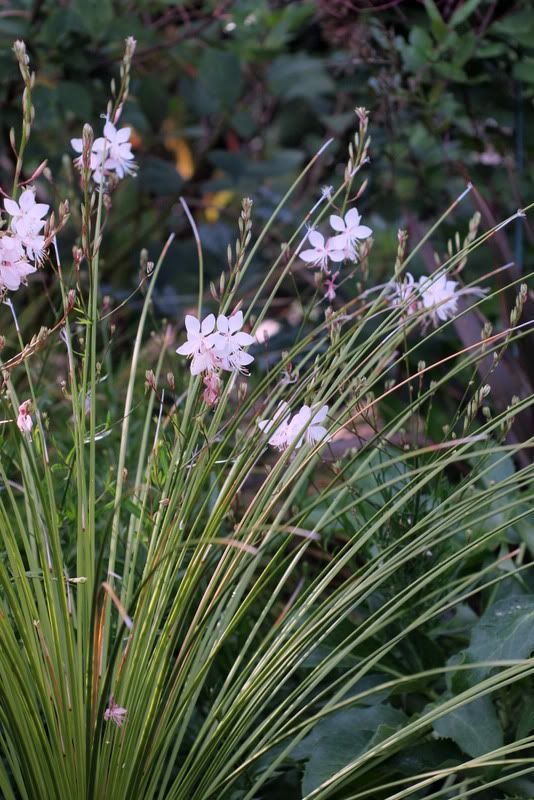
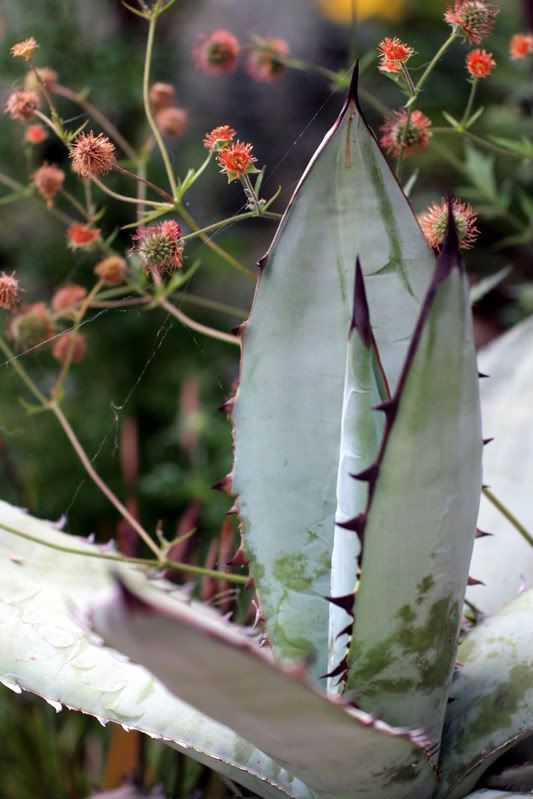
Onslaught of Salvia cacaliifolia barely held in check by a potted, battled-scarred A. americana. This salvia is flowering so well in this spot, I’m giving it a lot of latitude.
Cotyledon orbiculata var. oblonga, the ‘Finger aloe’ disappearing under Teucrium ‘Fairy Dust.’

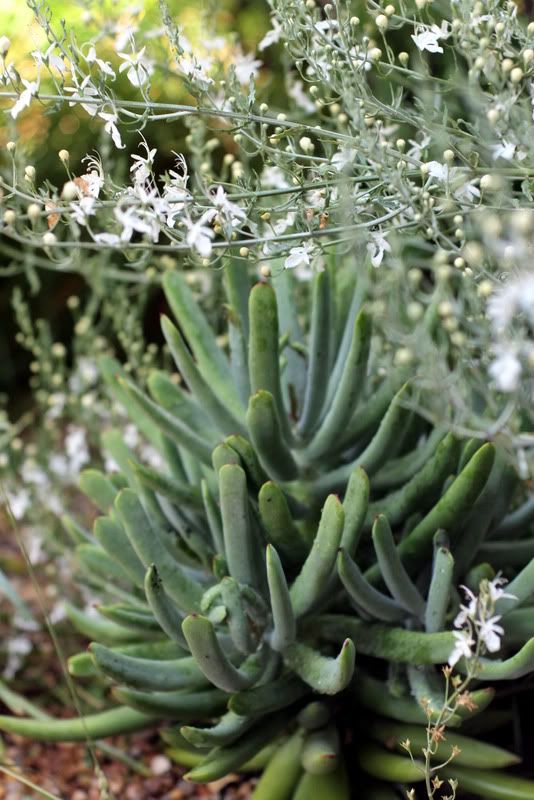
Evie among the hellebores, begonias, and compost buckets against the shady back wall contemplates the pushy, shoving garden spectacle of June.

*A guess at this unnamed agave’s ID. Input welcome.
I saw something tangentially related to gardens in the window of a golf shop in Koreatown recently, UV-protective clothing, which gives me the barest of opportunities to write about one of my favorite LA neighborhoods.
Los Angeles’ most densely populated neighborhood, Koreatown is also packed with epoch-defining memories. One of its landmarks, the Ambassador Hotel where Robert Kennedy, Jr. died, was bulldozed just a couple years ago to make way for a sorely needed school, the end result of an incredibly rancorous civic decision-making process. On a happier note, you won’t find better Korean barbecue anywhere else, the night life is jumping, and there’s architectural curiosities like the Spanish Revival Chapman Market for shopping and dining. Image found here.

Koreatown is as Blade Runner as LA gets, and was the first neighborhood allowed to erect huge electronic and digital signage. Where Koreatown begins and ends is disputed by those who care about such things, but two Art Deco gems are easy landmarks. The old Bullocks Wilshire building, now the Southwestern Law School, at Wilshire Boulevard and Westmoreland, an archival photo.
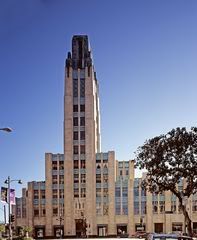
And the Wiltern Theater at Wilshire and Western. Image found here.
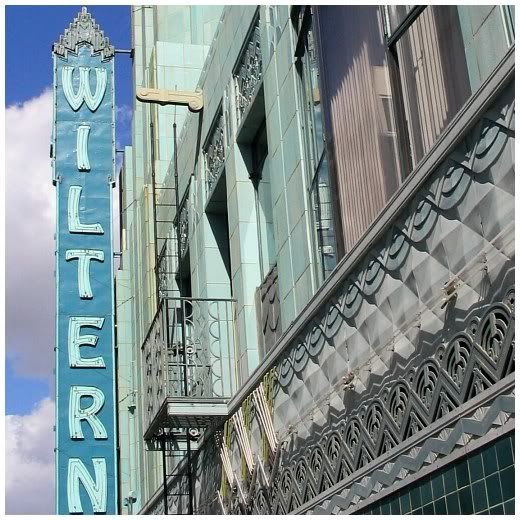
(Personal historical tour: I saw a scrappy British band called Radiohead for the opening of their OK Computer tour at the 2,300-seat Wiltern Theater in 1997. I expected The Bends and a few tidbits from the just-released album, which I hadn’t yet heard. They played OK Computer in its entirety. And, yes, it was life-altering.)
Western and Wilshire is the terminus for the “Purple Line” subway, which leaves downtown LA and runs under Wilshire Boulevard through Koreatown and is a major reason for the vitality of this neighborhood. After Western you must travel by bus or car through the neighborhood known as the Miracle Mile, past LACMA at Fairfax and Wilshire, on through Beverly Hills, into the UCLA college hub town of Westwood, finally arriving in Santa Monica, ending at the Pacific Ocean.
I was riding this Purple Line subway early one workday a few weeks ago, admiring the surrounding variety and diversity of inked skin, and in particular someone’s entire head tattooed with Maori-like scroll work. Getting off the train, one of the first shops I passed between Vermont and Normandie had a window poster depicting a torso with what looked like elaborately tattooed arms, wrist to shoulder, in a style similar to the Maori-like designs I had seen just minutes earlier on the train.
On closer inspection, it was UV-protective clothing made by Kool Dog USA.


“‘Kool Dog’ Product is soft, comfortable, lightweight, cooling. These unique elements make ‘Kool Dog’ ideal for casual wear, as well as for professional and recreational uses such as golfing, hiking, inline skating, fishing, soccer, baseball, climbing, jogging, driving. The versatile use of the material has enabled ‘Kool Dog’ to successfully market its products to a broad range of consumers.”
I was disappointed not to find a shirt (*these are just sleeves!) exactly like the one in the golf shop window on the website but still think Kool Dog’s use of bold patterns mimicking tattooing is a brilliant idea. Although Kool Dog doesn’t reference the niche market of gardening on its website, their clothing does seem a good fit for those of us who spend long summer days futzing in the garden or touring other gardens. Maybe this type of clothing is yesterday’s news, but if so, I haven’t yet come across it. Today’s New York Times had an article on UV-protective clothing, which brought me back to Kool Dog’s unique line. The idea is such a good one, I’m just surprised to find it hidden away in the window display of a golf shop in Koreatown.
*Edited 6/12/11: An email to Kooldog advised me these are just sleeves, and they offered to send a free sample. We’ll see what the mail brings…
Is it possible for a vegetable to reach celebrity status? Tuscan kale has seemingly reached a kind of stardom with both ornamental and vegetable gardeners.
Brassica oleracea var. acephala, aka Italian lacinato, Nero Toscano, black kale, dinosaur kale. I grow very few vegetables, but when I read Deborah Silver considered this kale a star of her 2010 ornamental containers, that was the push I needed to sow just a few for my mom’s vegetable garden last fall. Most brassicas are an effortless winter crop for our zone 10, and the kale was every inch as splendid as Deborah’s words and pictures described, so I sowed more for myself early this spring. By this time, though, I decided I wanted to eat them. Occasionally, with cannelini beans and parmesan, but also in soups, even raw in salads. These were from the fall-sown plants, some leaves harvested in early April.
Obviously, my life is lived through blogs these days. After admiring these handsome plants all winter in my mom’s garden, I finally got around to a taste test when Noel Kingsbury blogged that this kale was in reality too tough for eating. (“I once grew ‘Nero de Toscana’ kale, now a very trendy plant amongst heritage veg growers. Its tough leathery leaves were greatly inferior to any other kale I’ve ever grown, old or new.”) I respectfully disagree and want to eat lots more. (Roll the leaves into a cigar, chopping into half-inch pieces. Leaving the stems on or de-stemming is up to personal preference.)
But where to plant them? It would have to be containers. Call me an effete, a sissy, but I don’t want to start a practice of growing vegetables in black plastic nursery containers next to the tetrapanax and arundo. I may eventually get there, but not this summer. And I wanted to keep the veggies segregated, growing the kale with two other good-looking vegetables, the purple climbing bean ‘Trionfo Violetto’ and a climbing squash ‘Trombetta di Albenga.’ Ideally, the beans and squash would climb up the grapevines planted in the garden behind the terrace. This is a lot to ask of a very small space, so I’d need a deep container.
Finally, I decided these air vents from the building supply giant we’ve nicknamed Home Despot were an inexpensive solution I could live with.
I moved out a little table and chairs from the terrace and placed the vents bottomless on the brick-and-sand paving. Filled half with potting soil, half with a good, chunky compost.
Planted 3/31/11:
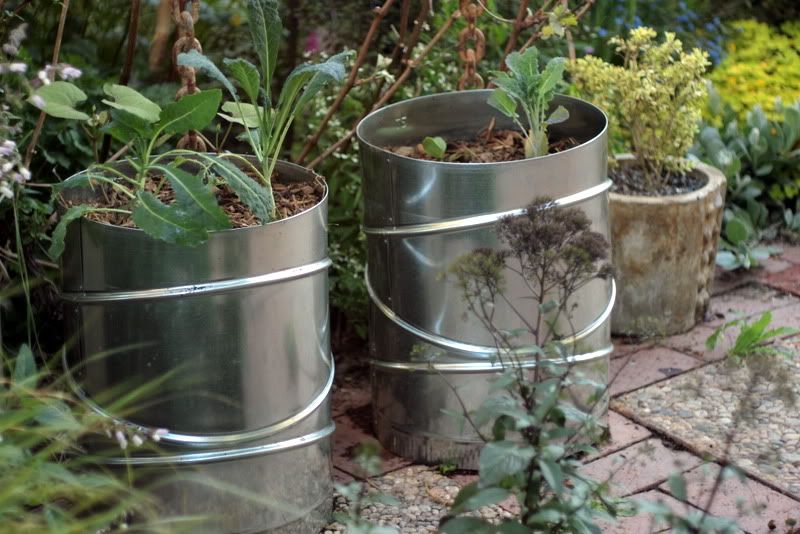
The grapevine, strictly ornamental and not for eating, clambers up these chains, which I’ve hung the past couple years to replace a trellis that obscured too much of the garden in winter. The back garden curves like a horseshoe around this little terrace. It’s much easier to reach through the curtain of vines, even in high summer, to attend to the plants growing in the border behind the grapes.
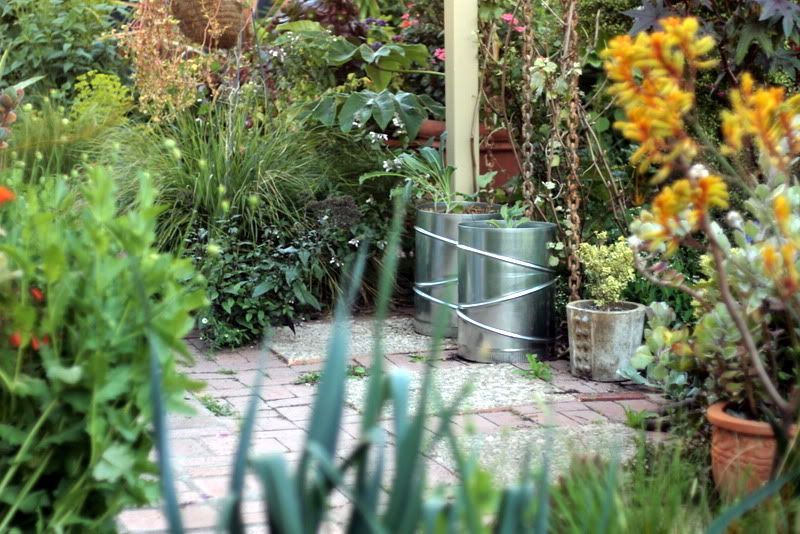
May 1. The grapes are well up the chains, the soil has not run out the bottom of the vents, and the plants are flourishing.
By June 7 the squash’s massive leaves are weaving up the grapevines, lush and free from insect damage so far.
The beans have reached the top of the pergola, and I found a purple pod about 5 inches long yesterday.
But this may ultimately be far too crowded for healthy, productive growth. Fun, yes. Practical? Possibly not.
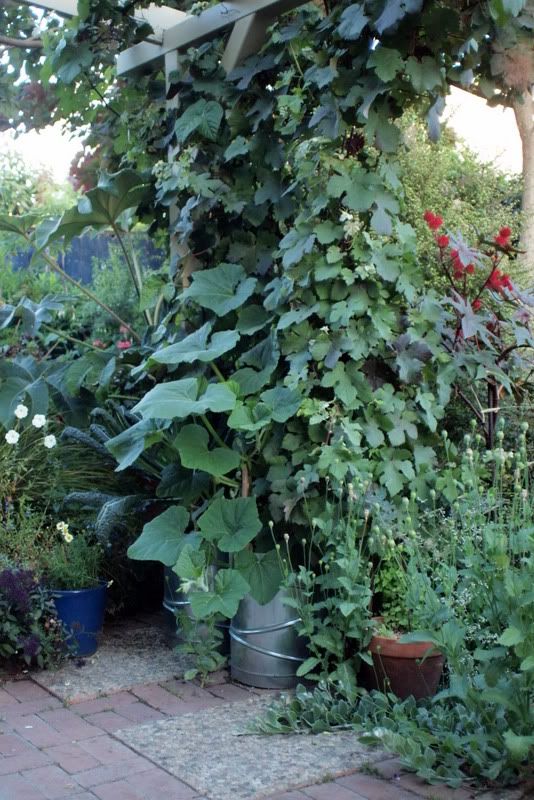
I’ll know by the end of summer. I’d be happy just to harvest a few squash.
I’ve pulled all the fall-sown kale at my mom’s vegetable garden and planted our tomatoes.
Kale is not a summer crop for zone 10, but I’m going to leave this plant in the vents to watch it run to seed.*
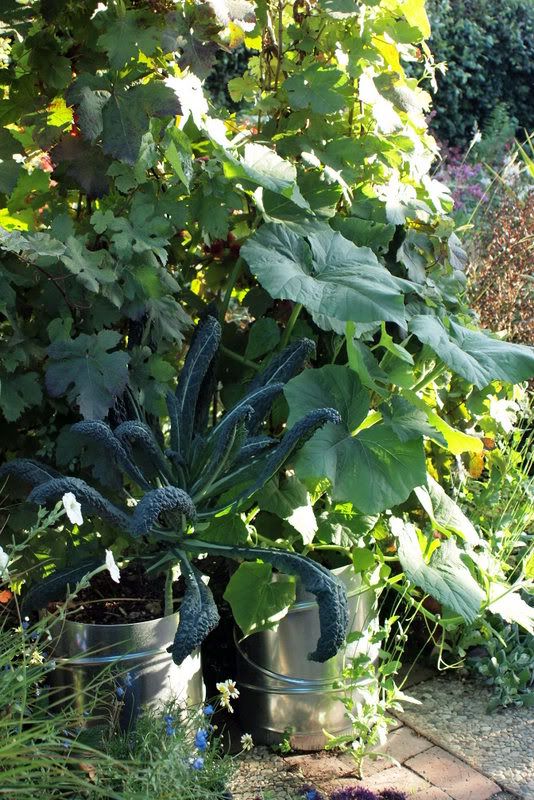
*Pulled the aphis-infested kale 6/14/11. Insect-free fall/winter/early spring crop for zone 10.
I’m a lumberjack, and I’m okay.
I sleep all night and I work all day.
(Manly chorus: He’s a lumberjack and he’s okay
He sleeps all night and he works all day)
I cut down trees. I eat my lunch.
I go to the lavatory.
On Wednesdays I go shoppin’
And have buttered scones for tea… — Monty Python.
Mammillaria decipiens var. camptotricha and fuchsia-flowered Sulcorebutia mentosa.
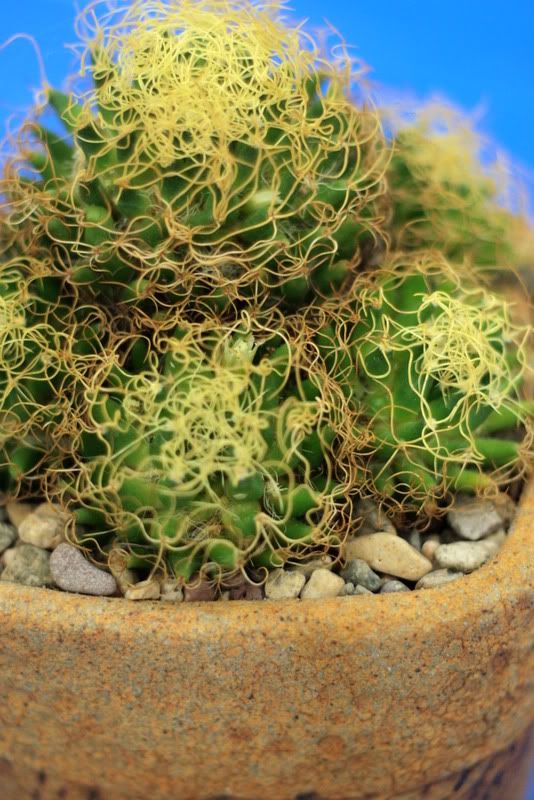
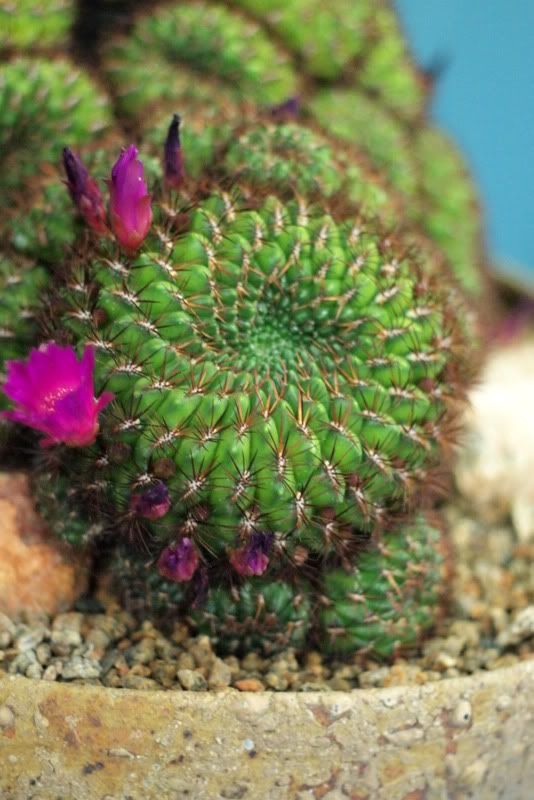
Why these are manly plants:
There are guy plants and chick plants, Walkowiak said as he tended potted cactuses atop tables in his Escondido backyard. Women leave plant sales carrying smooth-leaved rosette succulents, like aeoniums and echeverias. Men prefer spiny plants. It’s the danger factor. Cacti are edgy.
Quoted from “Succulents Loom Large,” by Debra Lee Baldwin in her 4/15/11 article on Peter Walkowiak published in The San Diego Union-Tribune.
(Mr. Walkowiak and his astonishing plants will be attending The Los Angeles Cactus and Succulent Society Plant Show and Sale taking place June 11th and 12th at the Sepulveda Garden Center, Magnolia Boulevard, Encino, CA. For information email: lacss.contact@gmail.com. Mr. Walkowiak found me, an obvious edgy plant neophyte wandering stunned among the sale tables at the San Diego Cactus & Succulent Society Sale and Show this past weekend, and personally escorted me to the show building to see his prize specimen of Euphorbia bupleurifolia, where he enthusiastically answered my noobish questions and chatted about convergent evolution and other plant-show topics.)
Bow-tie leaves of Titanopsis calcarea and crocus-like flowers of Gymnocalycium doppianum.
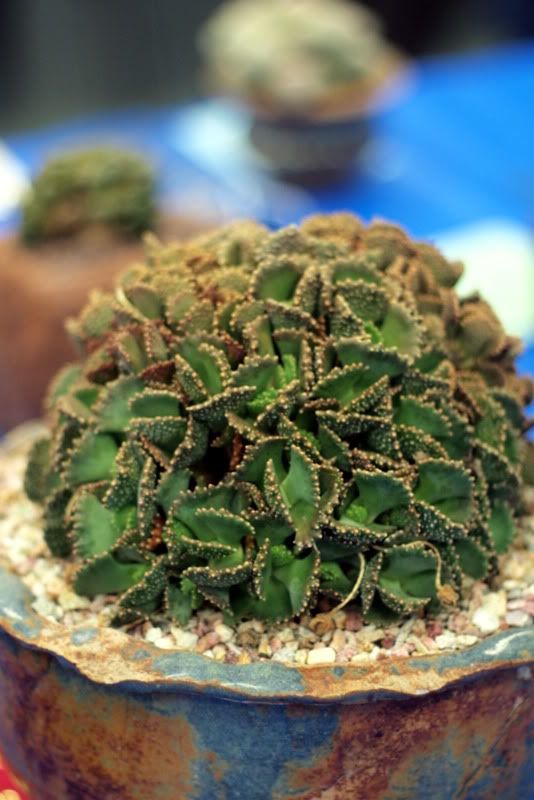

Manly or girly? Gymnocalycium multiflorum.
(Didn’t get the name of the lime-orange, columnar explosion in the blue-glazed pot.)
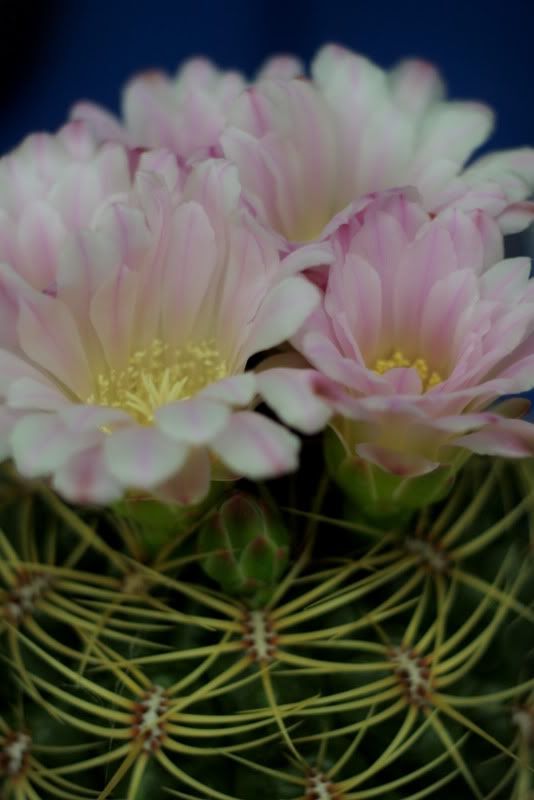
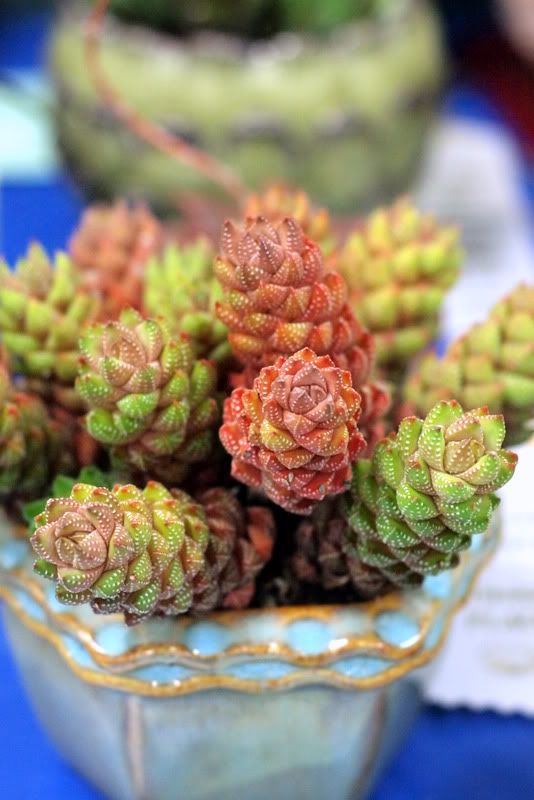
I would think the appeal of great plants is androgynous. But Mr. Walkowiak would be the one to know, having observed the buying habits of the public at countless plant shows. And he’s right, I’ve been slow to warm up to these tightly constructed, bristly confections, like xeric counterparts of alpine plants, that also seem expressly designed by extreme habitats for our doting pot culture.